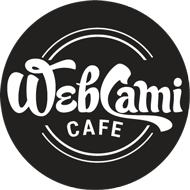There is more than one way to WordPress

As the year nears its end, I’ve had my career on my mind. 2022 will usher in my 20th year as WebCami. What started as a volunteer and part-time business has grown beyond what I had ever hoped for. Right now, I have over 250 active clients and 200 sites in my care plan program. And I do it all alone. I’m very proud of my accomplishments, but at the same time, I’ve never felt so unsure about the future. I rely on certain tools to do my job and I worry about how those tools might change, who might acquire them, and how much I might have to pivot in the future. I wonder if WordPress will continue to work for me.
My history with WordPress
Becoming a web designer
In 1999, I picked up “HTML for Dummies” and I was completely hooked. I soon enrolled in a web design and development certificate course at my local community college and started my business officially in 2002. My first websites were built using Arachnophilia, Frontpage, and finally Dreamweaver. I used HTML, CSS, and Javascript to code websites. Photoshop and Illustrator were used to make and manipulate graphics. Since I was working part-time with a young son, most of my jobs came from his schools, sports leagues, and local parents with businesses.
Intro to WordPress
Around 2008, a client asked me to link to something called a blog. This was my first exposure to WordPress and I immediately felt threatened. “Wow, this could finish me off. People can build their own websites”, I worried. That, of course, never happened. Soon, more clients were asking me to link to Blogger and WordPress from the sites I was building from scratch. I was starting to like the idea of clients being able to update their websites through this new thing called a content management system. I knew this would be so much easier than teaching them code or FTP.
In 2010, I joined a BNI group and my volume of work exploded. I decided to convert my website to WordPress and used Thesis as my theme of choice. I started building client websites using it. Then one day, a client came to me with a link to a Genesis theme. He wondered if I could use that instead. I felt like I had found the holy grail of web design. I looked online for help in learning Genesis, and that’s how I met my friend Kim Doyal. We did something called Skype and Kim walked me through the framework. After this, I was all in for StudioPress. In 2012, I bought a lifetime license and vowed to never work the old school way again.
Page builders
In 2014, I was introduced to DIVI. I built a handful of sites with it but found it more time-consuming to work with than Genesis. Visual Composer also made its way into my workflow. It also wasn’t as comfortable for me as Genesis. Through message boards, I found tutorials by Sridhar Katakam online. These tutorials were making my life so much easier as I worked to streamline my workflow using StudioPress themes. I wasn’t convinced that page builders were the way to go.
WordPress care plans
In 2015, my business was growing and even though every single person around me told me I needed to hire people, I didn’t want to. I had worked in a partnership before and found that splitting up profits meant working more for less. It was time to figure out how to make my business more manageable on my own. I hired a marketing coach and an organizer and got to work on getting my systems in order. Eventually, I started offering care plan services using ManageWP and began my first stream of recurring revenue. I was finding out that WordPress needed constant updates and backups the hard way through hacked websites. A care plan was not just for clients, but also for my peace of mind.
Beaver Builder
Locally, Ann Marie Gill was running a very similar business to mine and she told me I had to try a page builder called Beaver Builder. I was skeptical from my previous experiences, but I trusted my friend’s advice and purchased the agency-level licensing in the fall of 2016. It worked with Genesis and I liked that idea, but I eventually started using the Beaver Builder theme, too. The transition was tough. I had also signed up for both WP Elevation and Profitable Project Plan training in 2017. All of these new systems were taking hours to set up. But I noticed that building websites was taking me much less time. I bought licenses for every Beaver Builder plugin I could find.
GoDaddy
I ended up on a customer panel for GoDaddy when they purchased ManageWP. I was an early user of ProSites and had been buying domains and hosting at GoDaddy since 2003. In 2017, I reached out online to Lisa Stambaugh, the WebDiva, after finding her on GoDaddy’s site. Like Kim Doyal before her, I just knew we would hit it off. She made the connection for me to be on the GoDaddy Customer Advisory Panel. A couple of months later, I was invited to the GoDaddy Pro Summit. Friendships were made on that trip that I expect to last a lifetime. By 2018, I was attending WordCamp with GoDaddy as their first Pro Ambassador. I traveled with them from 2018-2019 and felt like part of the GoDaddy family. I still do.
Where is my business today?
Covid-19
In early March 2020, I traveled to visit my parents in California and made it back home shortly before Seattle went into lockdown. Two planned trips scheduled with GoDaddy were canceled. To my surprise, I soon found myself busier than I had ever been. I was helping clients pivot and make changes. I did much of it at a discount and discovered the power of Zoom. It was a scary time, but also a testament that I had been building a business with minimal overhead that could survive in the worst of times. In August of 2020, my Dad suffered a stroke, and my sister and I moved my parents into assisted living. I made four trips to see my parents in 2020 during the pandemic.
2021 has been another year of challenges and yet my business is on pace to break even with last year. I had unexpected neck surgery. My mom, who has dementia, entered memory care. My dad nearly died of sepsis and pneumonia. I spent 23 days in California with my family. Still, despite all these challenges in life, my business continues to grow. That’s not by accident.
It’s because I have great tools and systems in place. Here are the three most important tools in my business:
Tool #1. WordPress
What would have happened all those years ago if I had gone with Blogger as my CMS of choice? Or Joomla? I can’t even imagine. WordPress has been an amazing tool for growth in my business. It has allowed me to help hundreds of businesses increase sales and support their own business goals. The plugins that I use have also helped me help clients with various needs. And my clients can do their small updates without me. I’m not exactly sure the number of WordPress sites I’ve launched in my career, but my best guess is over 300.
Tool #2. ManageWP
I have over 200 sites in ManageWP. I love the access it gives me and my clients love knowing I’m looking out for them. Monthly reporting is a great touchpoint and can be easily scheduled. Cloning from my mock-up hosting to my clients’ hosting is flawless. I once fixed a site on a streetcar in New Orleans on my iPhone! It’s a real lifesaver and helps me be a hero when my clients need me the most. I share this tool with every designer that doesn’t know about it.
Tool #3. Beaver Builder
Beaver Builder has allowed me to become the designer I always wanted to be. I feel no constraints on what I can design. I feel creative and empowered using it. My clients LOVE it. Training them is a joy. They find it so easy to use and understand. They learn enough to feel like they don’t need to call me for every change. I’m faster than I’ve ever been in creating websites. I now have over 175 client websites using Beaver Builder.
My worries
As my business grows, the prospect of changing these tools becomes a scary thought. Every single week, there is a new acquisition to talk about in the WordPress industry. People are raving about Gutenberg – it’s the future of WordPress. But when I use Gutenberg, I feel like someone has replaced my iPhone with an old Nokia and now I have to multi-tap to send a text message again.
Sometimes, I feel like an outsider in the WordPress community. After all, I haven’t embraced Gutenberg, I’m not delegating as a solopreneur, and I’m just a designer.
I know can pivot if I have to. As I have shared above, I have done that my entire career. But, do I want to?
What if the best way to use WordPress is simply what works best for you?
Aren’t all the options within the WordPress community making it better? Can’t we all just embrace the diverse ways to use WordPress?
I’m going to make a concerted effort in 2022 to support everyone in the WordPress community to use WordPress in the way that works best for them. I’m so excited to attend the first in-person WordCamp in Birmingham, AL in February and I hope I have these exchanges:
“Do you love Gutenberg? GREAT. I’m impressed because I’m still figuring it out. What can you show me?”
“Are you trying to learn Beaver Builder? How can I help?”
“Got a ton of sites to manage? Here’s how I use ManageWP.”
“I have a friend that uses WordPress the way you do. Let me introduce you.”
I’m so grateful for all I have learned and the connections I’ve made using this open-source software called WordPress. It has brought me deep and lasting friendships that I cherish. And it has helped me grow my business and to help others grow theirs. For now, I’m going to embrace using WordPress the way that works best for me and encourage you to do the same.
Don’t let anyone tell you there’s only one way to WordPress.
RESOURCES: WPMinute – Blocks, Boards & Fishing Reels – How Gutenberg has Divided WordPress by Paul Lacey
